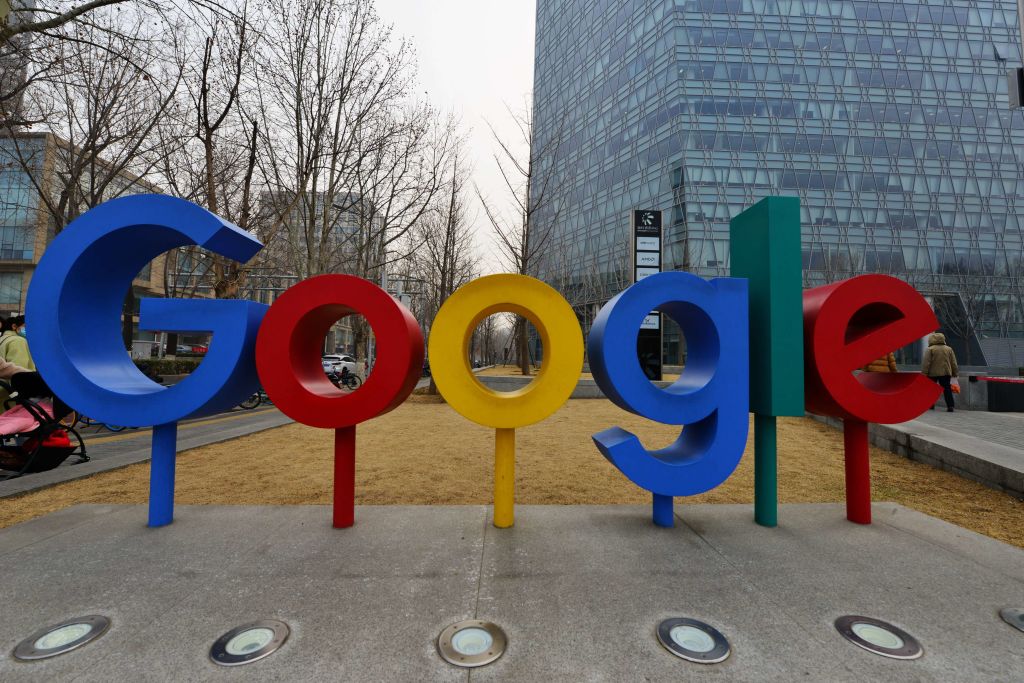Humans may not be acquiring pets at a pandemic-induced pace anymore, but they still are spending plenty on food, supplies, and services to take care of the furry members of their families.
Investors in public and private markets have their eyes on all that pet-care spending. Increasingly, consumers have gone beyond buying kibble to snapping up premium products and services that ensure their pets are living healthy, environmentally friendly lives. It’s a trend familiar to anyone who has followed the growth in eco-friendly wellness products and services for humans.
The shorthand for this phenomenon? The “humanisation of pets,” according to Milwaukee-based Baird.
“What that meant 10 years ago was you started to see the premiumisation of the quality of the diets and the emergence of grain-free brands and premium, cleaner-labeled food brands,” says Spencer DePree, a director in Baird’s global consumer and retail group. “That certainly is true today, but you’re starting to see that expand into other parts of the lifestyle of the pet.”
The entire pet economy is valued at about US$130 billion to US$140 billion, divided into four main categories: nutrition, products and supplies, healthcare, and services, according to Baird. Nutrition products snag most consumer dollars, but the so-called humanisation trend touches all of them.
Australia, Canada, and parts of Europe are leading the pet-market conversion to “non-traditional, more premium food and nutrition,” says Scott Ehlen, a director in Baird’s global consumer investment banking group. For the U.S., it’s a question of “how quickly, not if,” the trend will take hold, Ehlen says.
Penta spoke with DePree and Ehlen about what’s driving the growth in pet-related purchases and some of the companies on their radar screen.
Proactive vs. Reactive
One reason for the uptick in purchases of healthier pet products is consumers have realised they can proactively keep their pets happy and free from illness. The simplest step is to provide them with a diet that won’t lead to health problems in future years, and, as with humans, mix in nutritional supplements and treats with health benefits, such as dental care.
“That’s something you’ve seen in human wellness over the last five to seven years,” DePree says.
In pet food, that’s led companies to go beyond making grain-free kibble to producing fresh foods and to offering “toppers,” such as fish oils or freeze-dried raw meat. Companies are even developing foods that don’t rely on traditional beef and poultry proteins, such as Berkeley, Calif.-based Jiminy’s insect-based pet foods—a company backed by venture capital, according to private-markets data company PitchBook.
“Their value proposition is pretty impressive when you just look at the energy consumption that goes into producing a pound of beef,” DePree says.
As people spent more time at home with their pets during the pandemic, they also realised their furry companions have a lot of downtime. Humans that have returned to the office want to make sure their pets stay happy and active, so many are putting their dogs in daycare facilities with cameras that allow them to check in to see how their pup is doing.
“It’s not a kennel, it’s doggy daycare, where it’s analogous to taking your child to daycare,” Ehlen says.
There are a handful of franchisors backed by private equity in this sector including Dogtopia, which Ehlen says is one of the larger companies with at least 200 franchisees and more in the pipeline. An investment vehicle formed by the New York-based private-equity firm Red Barn Equity Partners with funding from institutions and family offices made a major investment in 2020 in the company, which offers daycare, boarding, and spa facilities, according to a news release.
Pet grooming is another area that’s prime for investment. Ehlen says he takes his own dog to a groomer who keeps track of appointments on a paper calendar. “It’s impossible to get a hold of her, impossible to schedule,” he says.
“A vast majority of the market continues to exist in that state in 2023,” Ehlen says. “You’re finally starting to see folks realise that this is a huge market, it’s a non-discretionary market, it’s going to be around forever. It’s just in desperate need of investment, of capital, of innovation.”
The ‘Pet’ Play in Food
The importance of pets to the economy is evident within the four major consumer products companies—Mars, Nestlé, Post Holdings, and General Mills. All include pet foods among their brands; Post, in fact, made a push into the business in February by purchasing Nature’s Way and Rachael Ray Nutrish, among other more standard pet food brands, from J.M. Smucker Co. for $1.2 billion.
For an investor interested in the growth of premium natural pet food, the only pure public-market play is Freshpet, based in Secaucus, N.J., DePree says.
While bigger companies have grabbed more market share, independent, private companies are “still the birthplace of new brands, new innovation, and that could be coming from either new companies or new product lines,” he says. “When the category validates itself or the scale hits, then you may see one of the bigger players jump in through an acquisition.”
Independent companies in the natural pet food space include the Farmer’s Dog, based in New York, which is backed by venture capital, according to Pitchbook. Denver-based Alphia, a pet food co-manufacturer that supplies other companies, was bought late last month by PAI Partners, a private-equity firm, from another PE firm, J.H. Whitney, according to a news release.
In March, the specialty pet food brand Natural Balance, announced it would merge with Canidae, which makes premium sustainable pet food, a news release said.
Before the stock market became more volatile last year, there was a “big queue of folks circling the wagons,” DePree says. Considering that the large consumer products companies are still trying to figure out how to grow this market, “over the next 18, 24 months, you’ll see some more stories become public.” For now, he says, “the demand for ways to play ‘pet’ outstrips the supply.”
The Internet-of-Things for Dogs
Pets aren’t exempt from humans’ obsession with tech, either. The latest pet-tech trends range from fitness trackers to food-monitoring devices that not only monitor how much and when your pet is eating, but also automatically order more food when you’re running low, DePree says.
Old-tech—such as electronic fences that keep dogs confined to a designated space—are being replaced by devices considered more humane and able to collect data on a pet’s behaviour, Ehlen says.
An example is Halo Collar, which uses wireless GPS and allows owners to set up zones to contain their pets wherever they are. The company, based in Woodcliff, N.J., and co-founded by dog psychologist Cesar Millan and tech innovator Ken Ehrman, was backed in May by Utah-based Decathlon Capital Partners, which provides revenue-based financing.
Most innovations in the pet economy so far have focused on dogs, but Ehlen and DePree say companies also have their sights on improving the lives of cats.
“If anyone is doing any innovation in cat, it’s alongside dog, but now you’re starting to see a more purpose-driven and specific sort of focus on the category,” DePress says. But he chides, “cats might be insulted at the humanisation concept—they probably hold themselves in a higher place.”
 Copyright 2020, Dow Jones & Company, Inc. All Rights Reserved Worldwide. LEARN MORE
Copyright 2020, Dow Jones & Company, Inc. All Rights Reserved Worldwide. LEARN MORE
What a quarter-million dollars gets you in the western capital.
Alexandre de Betak and his wife are focusing on their most personal project yet.
CIOs can take steps now to reduce risks associated with today’s IT landscape
As tech leaders race to bring Windows systems back online after Friday’s software update by cybersecurity company CrowdStrike crashed around 8.5 million machines worldwide, experts share with CIO Journal their takeaways for preparing for the next major information technology outage.
Be familiar with how vendors develop, test and release their software
IT leaders should hold vendors deeply integrated within IT systems, such as CrowdStrike , to a “very high standard” of development, release quality and assurance, said Neil MacDonald , a Gartner vice president.
“Any security vendor has a responsibility to do extensive regression testing on all versions of Windows before an update is rolled out,” he said.
That involves asking existing vendors to explain how they write software, what testing they do and whether customers may choose how quickly to roll out an update.
“Incidents like this remind all of us in the CIO community of the importance of ensuring availability, reliability and security by prioritizing guardrails such as deployment and testing procedures and practices,” said Amy Farrow, chief information officer of IT automation and security company Infoblox.
Re-evaluate how your firm accepts software updates from ‘trusted’ vendors
While automatically accepting software updates has become the norm—and a recommended security practice—the CrowdStrike outage is a reminder to take a pause, some CIOs said.
“We still should be doing the full testing of packages and upgrades and new features,” said Paul Davis, a field chief information security officer at software development platform maker JFrog . undefined undefined Though it’s not feasible to test every update, especially for as many as hundreds of software vendors, Davis said he makes it a priority to test software patches according to their potential severity and size.
Automation, and maybe even artificial intelligence-based IT tools, can help.
“Humans are not very good at catching errors in thousands of lines of code,” said Jack Hidary, chief executive of AI and quantum company SandboxAQ. “We need AI trained to look for the interdependence of new software updates with the existing stack of software.”
Develop a disaster recovery plan
An incident rendering Windows computers unusable is similar to a natural disaster with systems knocked offline, said Gartner’s MacDonald. That’s why businesses should consider natural disaster recovery plans for maintaining the resiliency of their operations.
One way to do that is to set up a “clean room,” or an environment isolated from other systems, to use to bring critical systems back online, according to Chirag Mehta, a cybersecurity analyst at Constellation Research.
Businesses should also hold tabletop exercises to simulate risk scenarios, including IT outages and potential cyber threats, Mehta said.
Companies that back up data regularly were likely less impacted by the CrowdStrike outage, according to Victor Zyamzin, chief business officer of security company Qrator Labs. “Another suggestion for companies, and we’ve been saying that again and again for decades, is that you should have some backup procedure applied, running and regularly tested,” he said.
Review vendor and insurance contracts
For any vendor with a significant impact on company operations , MacDonald said companies can review their contracts and look for clauses indicating the vendors must provide reliable and stable software.
“That’s where you may have an advantage to say, if an update causes an outage, is there a clause in the contract that would cover that?” he said.
If it doesn’t, tech leaders can aim to negotiate a discount serving as a form of compensation at renewal time, MacDonald added.
The outage also highlights the importance of insurance in providing companies with bottom-line protection against cyber risks, said Peter Halprin, a partner with law firm Haynes Boone focused on cyber insurance.
This coverage can include protection against business income losses, such as those associated with an outage, whether caused by the insured company or a service provider, Halprin said.
Weigh the advantages and disadvantages of the various platforms
The CrowdStrike update affected only devices running Microsoft Windows-based systems , prompting fresh questions over whether enterprises should rely on Windows computers.
CrowdStrike runs on Windows devices through access to the kernel, the part of an operating system containing a computer’s core functions. That’s not the same for Apple ’s Mac operating system and Linux, which don’t allow the same level of access, said Mehta.
Some businesses have converted to Chromebooks , simple laptops developed by Alphabet -owned Google that run on the Chrome operating system . “Not all of them require deeper access to things,” Mehta said. “What are you doing on your laptop that actually requires Windows?”















